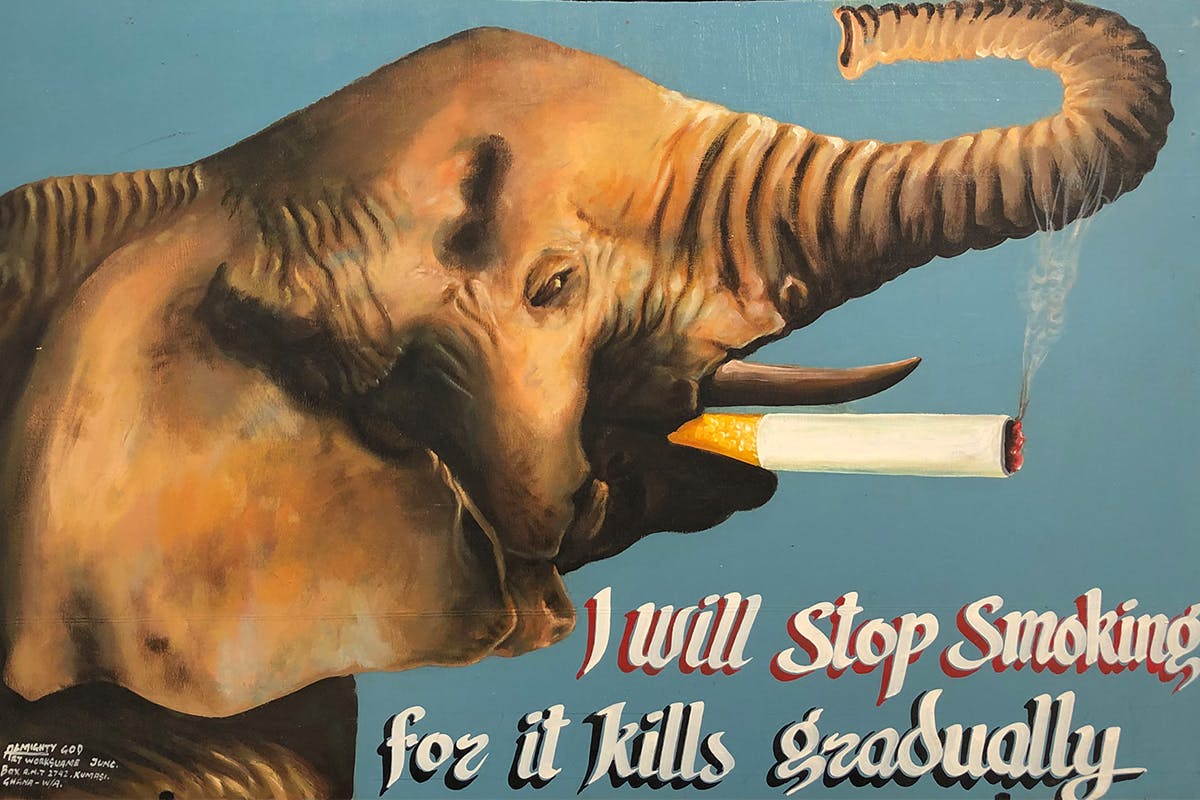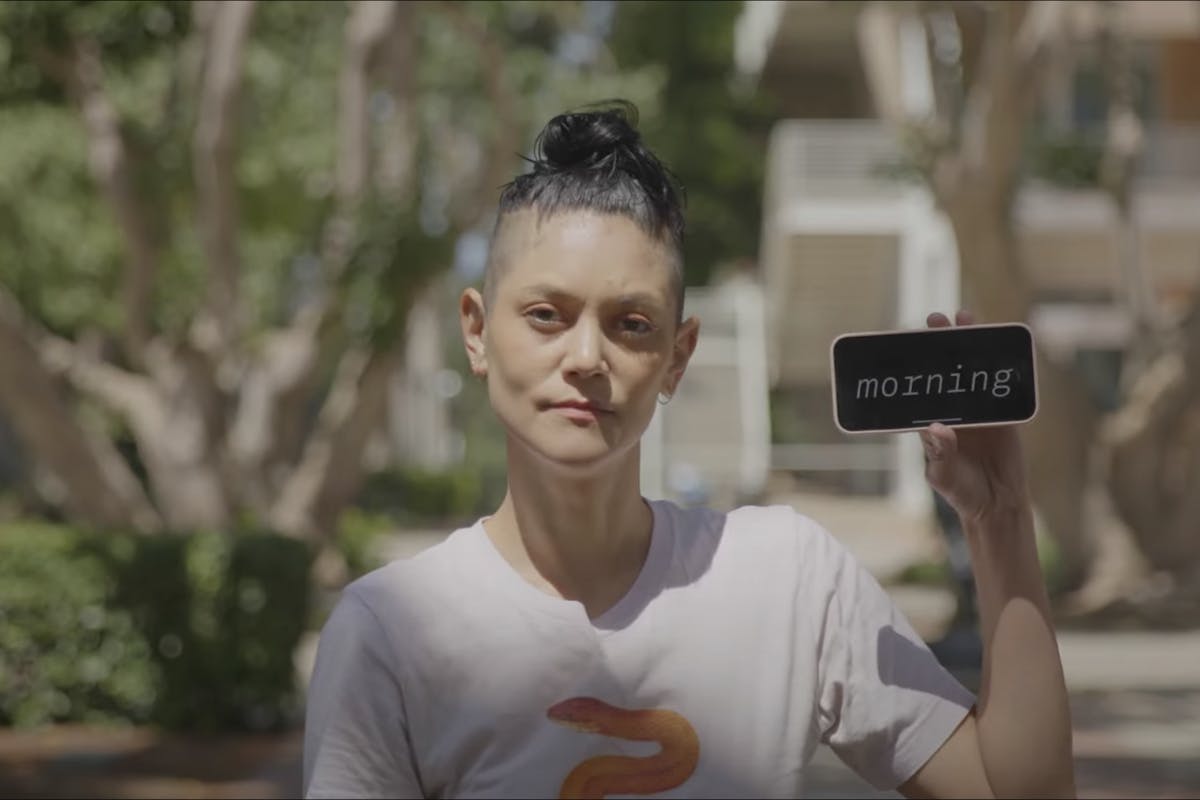The Cigarette Paintings of Almighty God

Ghanaian artist Kwame Akoto (a.k.a. Almighty God) had the nicotine habit bad. He kicked it when he found Jesus, launching a series of anti-smoking paintings that has spanned almost 30 years. The first, from 1993, had Joe Camel himself taking a drag, accompanied by the inscription "I will stop smoking for it kills gradually." That was followed by a chain-smoking menagerie of animal paintings, as well as pictures of puffing babies, children, adults, and skulls. Ghanaian art scholar Doran H. Ross was working an Akoto/Almighty God retrospective for UCLA's Fowler Museum at the time of his 2020 death. The exhibition has been brought to completion by Erica P. Jones and Betsy D. Quick as "How Do You See This World?: The Art of Almighty God"(through May 15, 2022). The cigarette paintings, an important part of the show, are installed on a scaffold evoking the display at Akoto's Almighty God Art Works in Kumasi, Ghana.
Akoto got his start as a commercial sign painter. As digitally produced signs supplanted the hand-painted sort, Akoto turned the globalization lemon into lemonade. He forged a new career painting for the international art market. Thanks to Ross, the Fowler has perhaps the best institutional collection of Akoto's paintings anywhere. This is part of a broad representation of Ghanaian art spanning centuries and media.
Akoto draws on not only on his sign-painter résumé but on the Ghanaian tradition of blending textual wisdom with image. His paintings often talk to the viewer, not unlike those of Edward Hicks and Barbara Kruger, or Ad Reinhardt's cartoon of a modern painting ("What do you represent?").
What a pipe was for Magritte, a cigarette was for Akoto. Kind of. Akoto was painting public service announcements, not paradoxes. Like all commercial artists, he knows you have to catch the public's attention before anything else. Hence the talking animals (a staple of Super Bowl commercials). "There are even smoking snakes, frogs, and fish, the latter perhaps requiring a certain leap of faith," wrote Ross. "Plants are not exempt from depictions in the series and I have documented smoking cabbages, tomatoes, peppers, onions, and bananas, among others."
Akoto prized Ross' two articles on his work in the UCLA journal African Arts. The two became friends, as demonstrated by two posthumous tribute paintings of Ross by Akoto that are in the show.
Curators are not generally expected to intervene in an artist's oeuvre, the more so when they're from different cultures. It appears that Ross broke that prime directive once, and the result is… spectacular?
Responding to the meta quality of Akoto's paintings talking about themselves, Ross proposed a painting of a cigarette smoking a cigarette. Akoto took the idea and ran with it. Ross bought the painting, donated it to the Fowler, and it's now in this show. It's my favorite painting in the exhibition. Magritte, move over.

